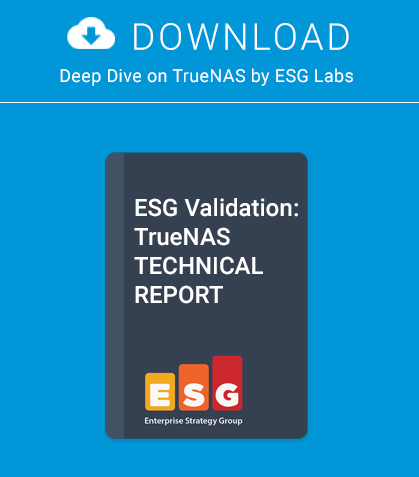I recently had a chance to sit down with Doug White, Senior Test Engineer at iXsystems, and discuss with him some of the upcoming products that we’re so excited for.
Chief among them is codename ‘RAIDZilla’. It’s still a little bit under wraps, but far enough along now that we can start to see the shape and scope of the project, and let some of the details go public.
I got to follow Doug around for a while, and I was very impressed with the level of quality control we employ here. Doug explained to me that when selecting a case, it was important not only to find something that fit the scope of the project, but also took into account things that would be easy to overlook. Does the case have more bent metal or sharp corners? Are the construction and materials high quality? What is the bezel like? Does it contain functional fault lights that the software can use?
Corey: So, Doug, what exactly is RAIDZilla?
Doug: I can’t give too much away now, but what I can tell you is that it’s a combination of specially developed hardware and software based on the FreeNAS™ platform. We’re essentially trying to build an inexpensive and standardized NAS appliance with blazing fast (yet easy to use) management software.
Corey: What makes it different than FreeNAS™?
Doug: Well, obviously the software is proprietary, rather than Open Source, but RAIDZilla going to have a lot of really compelling features and optimizations that the ‘vanilla’ FreeNAS™ software is going to lack.
Corey: What does the software platform look like?
Doug: All FreeNAS™-type software runs on a stripped down version of the latest FreeBSD kernel. When you’re trying to control the sheer volume of information that one of these FreeNAS™ heads has to be able to cope with, you really want something that’s going to be as minimal – and therefore fast – as possible. RAIDZilla takes it to a whole other level, with some very interesting software optimization that’s just going to blow the doors off of anything else out there.
Corey: Excellent. What about the hardware?
Doug: RAIDZilla’s initial implementation will be appliance-like, in a 1U form factor with a moderate amount of storage. We’re thinking about doing a 2U unit later on, but it’s too soon to say. Basically, you’ll have two 1U heads sharing control of two storage units. This also means that one of the unique features we’re implementing with RAIDZilla is ‘Head Redundancy’.
Corey: Tell me about ‘Head Redundancy’?
Doug: Certainly. RAIDZilla is designed in such a way that it is possible to have two heads sharing control of two disk arrays. This is the ultimate redundancy. You can have an array go down, or a head go down, or even a head and an array, but your users won’t notice any ill effects, not even a slowdown. It will just automatically switch control to the functional hardware, and switch back when repairs have been made.
Corey: Speaking of cool features, a little bird mentioned something about Fusion-IO cards being an option.
Doug: Yeah, we’ve been considering the potential for flash acceleration, through the addition of a Fusion-IO card. There are some kinks that still need to be worked out, but a flash memory accelerated RAIDZilla appliance has the ability to be very, very fast.
Corey: So, just how fast is very fast?
Doug: Well, let’s assume (optimistically) that a typical hard disk has a random seek time of 12 milliseconds. What this means is that when the disk finishes reading one section of information, it takes 12ms to move to the next section and start reading again. By human standards, 12ms is very fast. However, Fusion IO cards can have seek times as fast as 26 microseconds. There are 1000 microseconds in a milisecond, making the random access speed of a Fusion IO card about 460x faster than a conventional hard disk.
What this means is that in any application requiring quick access to files for multiple users, the NAS device will be able to provide those files as quickly as the network can deliver them. This makes an excellent platform for video streaming, scientific applications, and just plain fast access.
——
Doug was emphatic that RAIDZilla was designed to “look good, and work great”. Part of his job at iXsystems is to not only testbed the prototype systems, but look for things as simple as sharp edges on the case, pieces that don’t fit well, or areas that might be problematic during production or during customer use.
I think we’re all very interested to see how RAIDZilla turns out.
Corey Vixie



